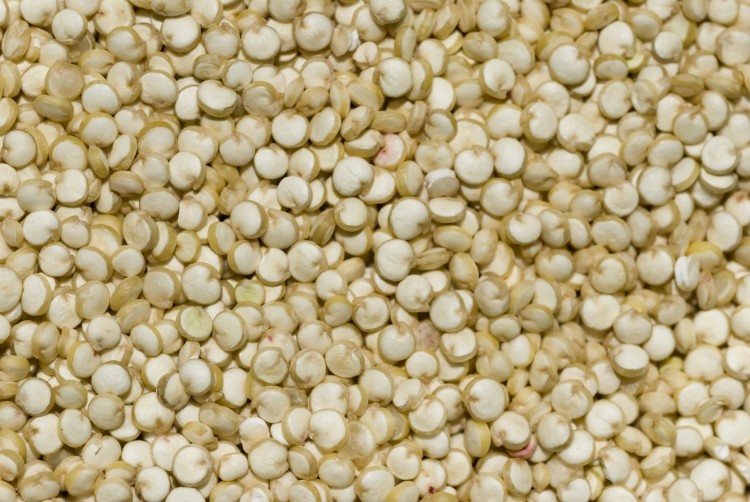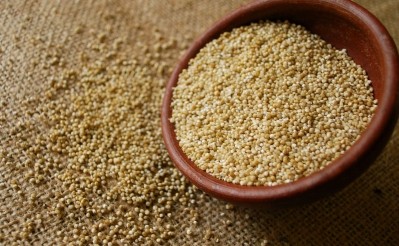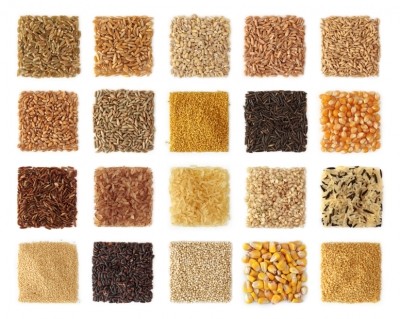‘Formulation friendly’ quinoa powder aims beyond supplement market

The Momence, IL firm's director of business development, Brad Evers, told FoodNavigator-USA that what makes QuinoaTrim unique is the firm’s patented Trim process, which was developed in the 1990s "to improve the functional benefits of whole grains."
“A USDA researcher looking to create a fat replacer out of beta glucan-rich materials developed a mechanical shearing technique that essentially shatters the tough cell wall of grain materials—such as oat or barley—freeing the soluble fiber,” Evers said. “The material is sent through a filtering process to take out the insoluble fiber; then it goes through a drum drying system. The end result is a powdered ingredient that is very formulation friendly.”
FutureCeuticals—sister firm to IQF produce supplier Van Drunen Farms—has already been processing quinoa through Trim process for a few years for use in an ancient grain ingredient blend, which is used mostly by dietary supplement, meal replacement and pre- and post-workout product manufacturers to improve the flavor and flow of their products.
Ready-to-drink and ready-to-mix beverage applications are also a natural fit for Trim ingredients, given that they’re “linearly viscous,” Evers said, which means “the more you add, the more luxurious and creamy the product gets.”
The company hopes quinoa’s widespread food industry appeal will grow its customer base beyond the supplement and sports nutrition markets, as the ingredient shows promise in a range of food applications, such as bakery (can replace up to 1/3 of flour with QuinoaTrim), nutritional bars and soup.
Quinoa at the crux of ancient grain, healthy protein and gluten-free
“Quinoa has been on our radar for a while, because it’s situated squarely within two really demanding camps,” said marketing specialist Andy Wheeler. “Quinoa itself is recognized as an inherently healthy protein- and carbohydrate-rich material and then you have the added benefit of being naturally gluten free. Given the growing demand for ancient grains as a whole, we thought why don’t we come out with a standalone quinoa product as a value add? It seems like just about anywhere you can get it on the label gives the product a boost.”
Quinoa is one of only a handful of plant-based sources of complete protein. Moreover, its inherent chocolaty, nutty flavor notes can help mask off flavors in functional foods and beverages.
Supply remains a concern
Although it is one of the more expensive grains to source, FutureCeuticals gets around cost considerations by recommending use of very small quantities to achieve the desired sensory and health benefits.
“We consider it a cost-competitive ingredient because you need just one to three grams per serving,” Wheeler said. “An essential piece of the Trim process—particularly relating to RTM beverages—is the material it creates is considered a hydrocolloid, meaning it acts as a gum or suspension agent when added to beverages. So you can use very little of it and get a really desirable organoleptic effect.”
Still, like many suppliers, FutureCeuticals is concerned about volatility and pricing in the high-demand quinoa market—particularly as the ingredient has gained traction in the marketplace. Indeed, the United Nations Organization for Food and Agriculture designated 2013 the International Year of Quinoa (see related article: "FAO asks: Could quinoa become a worldwide staple?"
“Interest has been high,” Evers said. “We were able to secure a supply chain such that we are comfortable in foreseeable future. But it’s a commodity ingredient, and prices are driven by demand. There are certainly more sources for quinoa seed out there, but one caveat is that demand has been so high, it can be difficult to secure enough to meet customer need.”
















